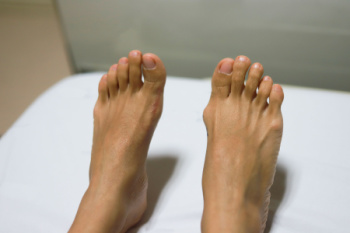
Bunions, a foot deformity that impacts mobility and causes discomfort, afflicts millions of people across the globe. These bony protrusions form at the base of the big toe, gradually pushing it outward while forcing the tip to move toward the other toes. Despite common misconceptions, bunions are not solely caused by wearing ill-fitting shoes. Rather, they often stem from inherited structural issues, such as foot mechanics or arthritis. Bunions tend to worsen over time, leading to swelling, redness, and pain, especially when wearing tight or narrow footwear. Bunions can hinder daily activities and contribute to other foot ailments, like corns and calluses. While conservative measures, such as wearing wider shoes, using toe spacers, and applying ice packs can provide temporary relief, surgical intervention may be necessary for severe cases to realign the toe joint and alleviate discomfort. If you have developed a bony protrusion at the base of your big toe, it is strongly suggested that you consult a podiatrist who can confirm a bunion diagnosis, and offer relief and treatment options.
If you are suffering from bunions, contact Dr. Nicholas Przystawski of Central Florida Foot Care, PA. Our doctor can provide the care you need to keep you pain-free and on your feet.
What Is a Bunion?
A bunion is formed of swollen tissue or an enlargement of boney growth, usually located at the base joint of the toe that connects to the foot. The swelling occurs due to the bones in the big toe shifting inward, which impacts the other toes of the foot. This causes the area around the base of the big toe to become inflamed and painful.
Why Do Bunions Form?
Genetics – Susceptibility to bunions are often hereditary
Stress on the feet – Poorly fitted and uncomfortable footwear that places stress on feet, such as heels, can worsen existing bunions
How Are Bunions Diagnosed?
Doctors often perform two tests – blood tests and x-rays – when trying to diagnose bunions, especially in the early stages of development. Blood tests help determine if the foot pain is being caused by something else, such as arthritis, while x-rays provide a clear picture of your bone structure to your doctor.
How Are Bunions Treated?
- Refrain from wearing heels or similar shoes that cause discomfort
- Select wider shoes that can provide more comfort and reduce pain
- Anti-inflammatory and pain management drugs
- Orthotics or foot inserts
- Surgery
If you have any questions, please feel free to contact our office located in Leesburg, FL . We offer the newest diagnostic and treatment technologies for all your foot care needs.
